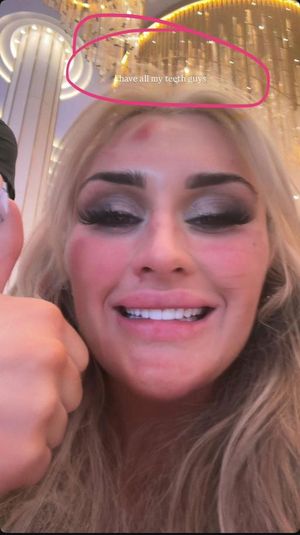The Netflix series 'Adolescência' has sparked diverse reactions, delving into the unsettling potential for violence that resides within individuals. With its gripping narrative, the series presents a chilling exploration of a 13-year-old boy, Jamie Miller, who is accused of murdering his classmate, Katie Leonard. The story unfolds against the backdrop of a family grappling with the fallout of this shocking event, raising profound questions about the nature of aggression and the societal norms that shape young minds.
Premiering in early 2025, 'Adolescência' has quickly become one of the most talked-about series of the year, captivating audiences with its four episodes filmed in a single take. The narrative follows Jamie, portrayed by Owen Cooper, as he navigates the complexities of adolescence, family dynamics, and the pressures stemming from toxic masculinity. The series not only highlights the dramatic events surrounding the murder accusation but also reflects on the cultural environment that can lead to such tragic outcomes.
As viewers watch Jamie's life unravel, they are compelled to confront the uncomfortable reality of how digital culture influences youth behavior. The series paints a stark picture of the challenges faced by young people today, particularly in the context of social media and online communities that often promote harmful ideologies. Jamie's character is depicted as a product of this environment, where the ideals of masculinity are distorted and aggression is normalized, leading to devastating consequences.
According to Marcos Antônio Ribeiro Moraes, a psychoanalyst and contributor to Jornal Opção, the series serves as a mirror reflecting the complexities of contemporary masculinity. He notes that Jamie's violent act is not an isolated incident but rather a manifestation of a broader cultural malaise. Moraes emphasizes that the pressures from school, family, and digital interactions contribute to a toxic atmosphere where aggression can flourish. "The series challenges us to think about how any individual can resort to violent actions, driven by the aggressive impulses that are both alien and familiar to us," he explains.
The portrayal of Jamie's family life adds another layer of complexity to the narrative. While his home environment appears normal on the surface, underlying tensions related to masculinity and parental expectations become apparent. Jamie's father, in particular, struggles to convey a positive social role to his son, inadvertently reinforcing the toxic norms that the series critiques. This dynamic raises questions about the responsibilities of parents and educators in shaping young minds and addressing the harmful discourses prevalent in society.
Moreover, 'Adolescência' does not shy away from the harsh realities of modern adolescence. The series delves into the influences of online subcultures, such as Incel and Red Pill communities, which can further entrench harmful beliefs about gender and violence. Moraes argues that these digital spaces often operate outside the bounds of societal norms, creating an environment where aggression is not only accepted but celebrated. He asserts, "In the realm of the digital, we find a lawless territory where it becomes natural to violate and aggress against all forms of difference."
The series also serves as a call to action for schools and families to engage in meaningful discussions about these issues. Moraes advocates for incorporating the themes of 'Adolescência' into educational settings, where they can foster dialogue about the dangers of toxic masculinity and the importance of respecting differences. He believes that the metaphorical representation of Jamie's actions as a form of cancellation and aggression against women is particularly pertinent in today's society, where such dynamics are increasingly visible.
As the series unfolds, viewers are confronted with the chilling reality of Jamie's arrest and the subsequent investigation into the circumstances leading up to the crime. The narrative challenges audiences to reflect on their own experiences and the societal structures that contribute to such tragedies. Moraes poignantly notes, "The horror of a young life lost is not just about the death of a girl with a bright future ahead; it symbolizes the many forms of violence and aggression that permeate our social and virtual interactions."
In addition to its gripping storyline, 'Adolescência' raises critical questions about the role of education in addressing these issues. Moraes emphasizes that schools must take responsibility for confronting the narratives that support exclusionary worldviews. He argues that educational institutions are integral to shaping a more inclusive society, one that respects and celebrates differences rather than perpetuating cycles of violence and aggression.
Ultimately, 'Adolescência' is more than just a series about a tragic event; it is a poignant exploration of the complexities of modern life, particularly for young people navigating the turbulent waters of adolescence. The series invites viewers to engage with difficult questions about identity, violence, and the societal norms that shape our understanding of masculinity and femininity. As Moraes concludes, the series serves as a reminder of the urgent need for a cultural shift towards respect and understanding, particularly in the context of gender relations.
In a world where the pressures of digital culture and toxic masculinity are ever-present, 'Adolescência' provides a timely and necessary commentary on the challenges facing today's youth. It compels us to reflect on our roles as parents, educators, and members of society in fostering a more compassionate and inclusive environment, free from the shackles of aggression and violence.




